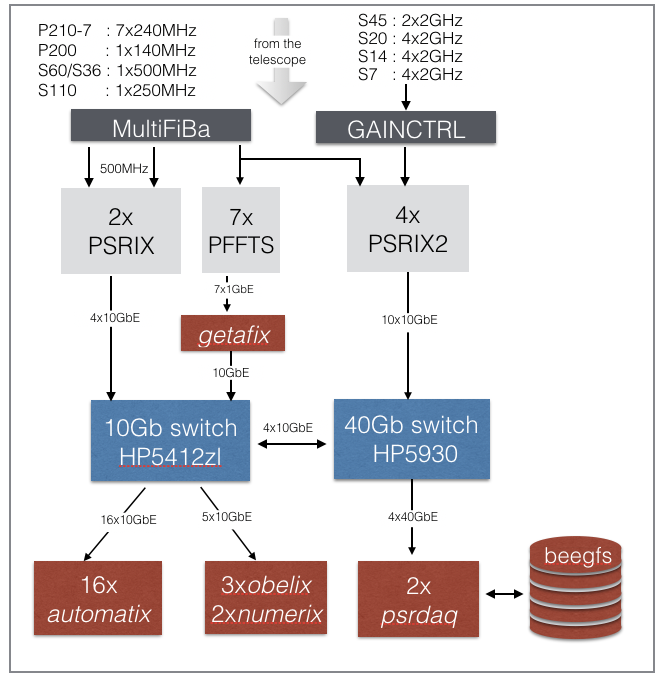Pulsar Instruments at the Effelsberg 100m
Pulsar observations at the Effelsberg 100m Telescope are facilitated by a few high performance computers and FPGA subsystems. This includes the systems in commissioning (eg. PAF and the associated cluster) and those used regularly for observations. These pages detail only the production mode systems, which make use of the ROACH1, ROACH2 or the PFFTS (all based on Xilinx FPGAs). The ROACH systems have programmable FPGAs that implement either packetised baseband generators or pulsar search mode data generators (all 4 Stokes). Subsequently, in timing mode CPU/GPU nodes process the baseband data to generate averaged coherently dedispersed pulse profiles. If required, the CPU/GPU nodes can optionally capture and store the baseband or pulsar search mode data. The PFFTS is also based on a FPGA, but implement a fixed 512-channel search mode design, writing out data at 51.2us time resolution. The PFFTS is hardwired to the 7-Beam frontend.
The wide variety of receivers and bandwidths means that not all data products are possible for all receivers. For instance with the L-Band receiver, one can enable only timing and baseband modes. On the other hand when observing with he 7-Beam receiver, once can choose timing, baseband and search mode data with he PFFTS.
The image on the right shows an overview of the pulsar observing infrastructure at the Effelsberg 100m. PSRIX system is based on the ROACH1 hardware and 1 GSPS 8-bit ADC, and PSRIX2 makes use of ROACH2s equipped with two 5GSPS ADCs.
This section contains all information related to pulsar instruments at the Effelsberg observatory. This section is structured under various headings listed on the top left of this page. Currently unsorted and/or old information is listed below.
